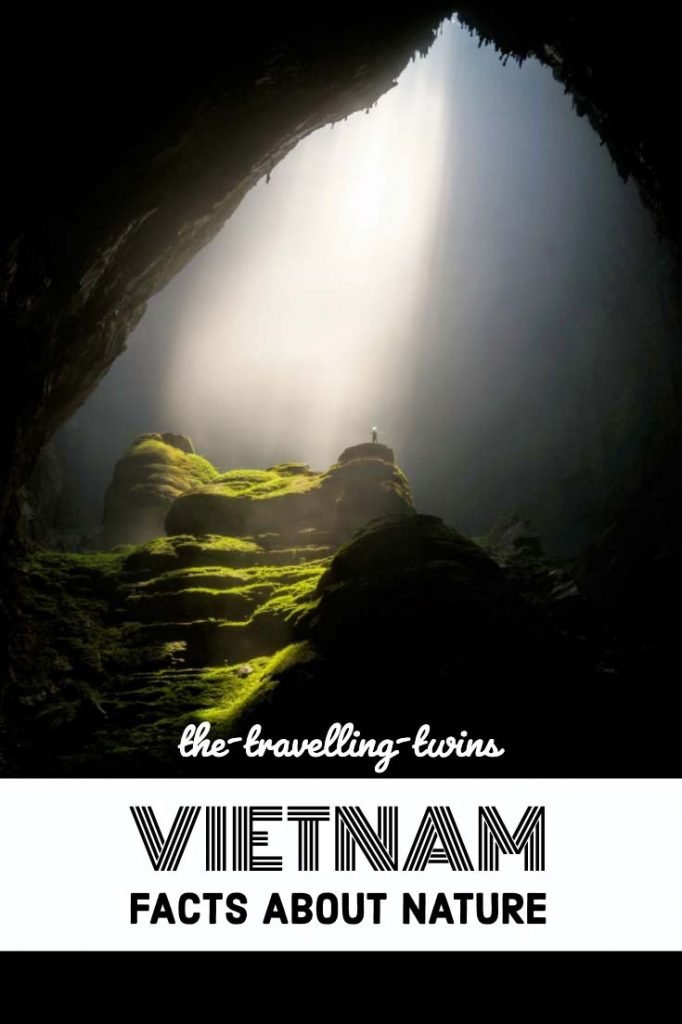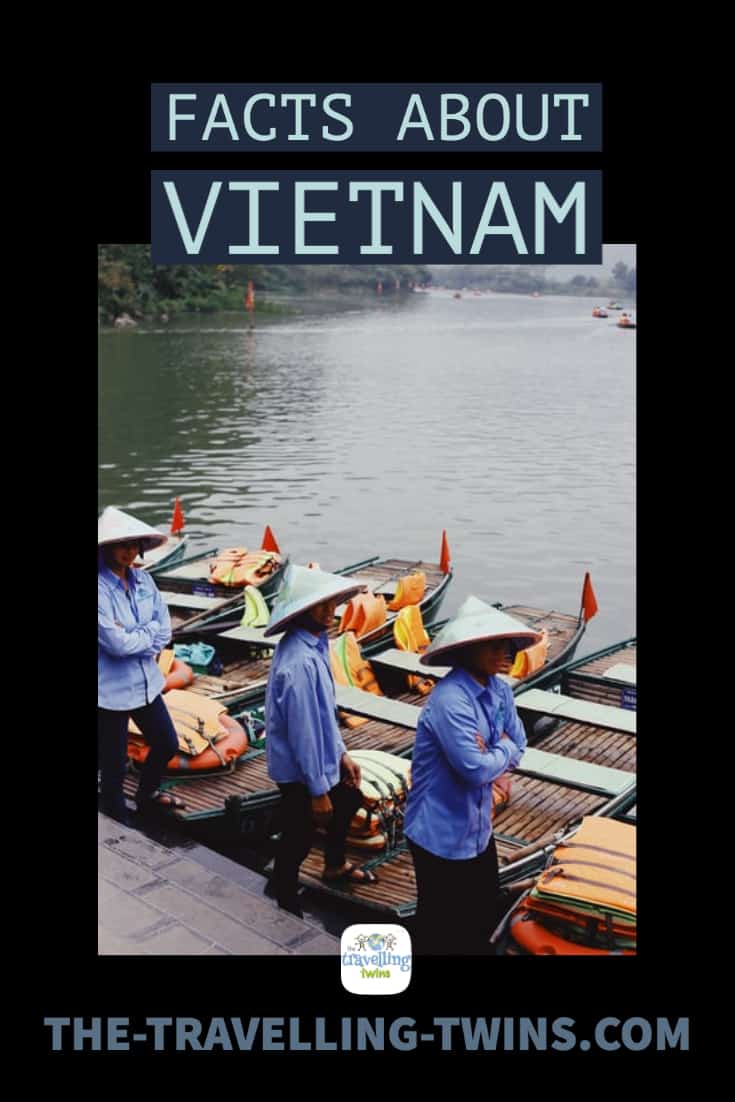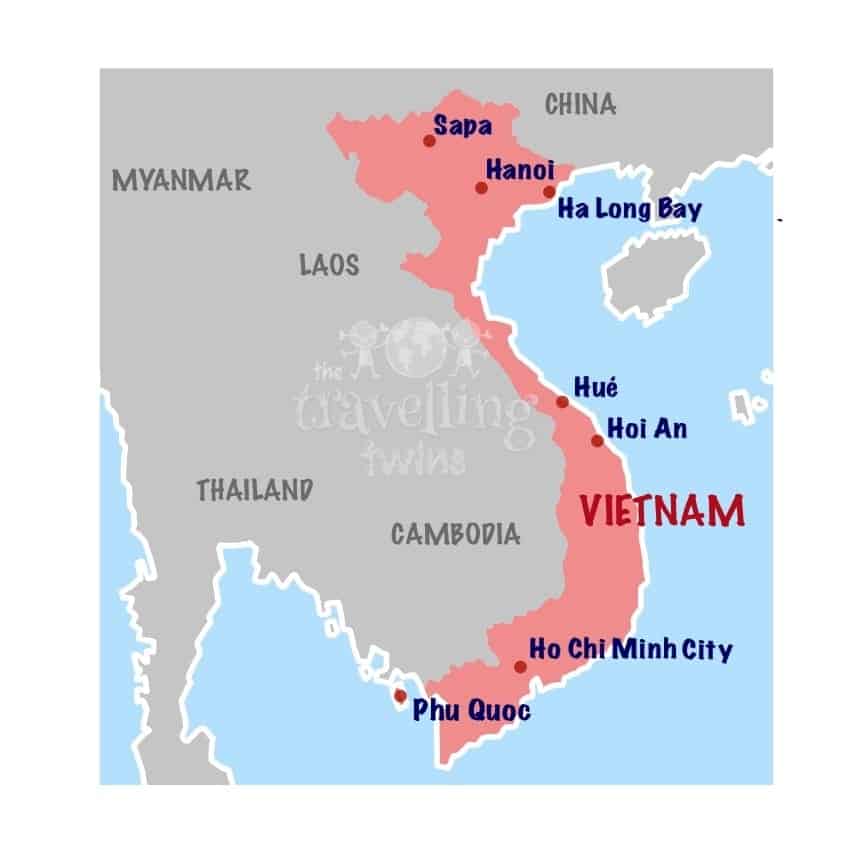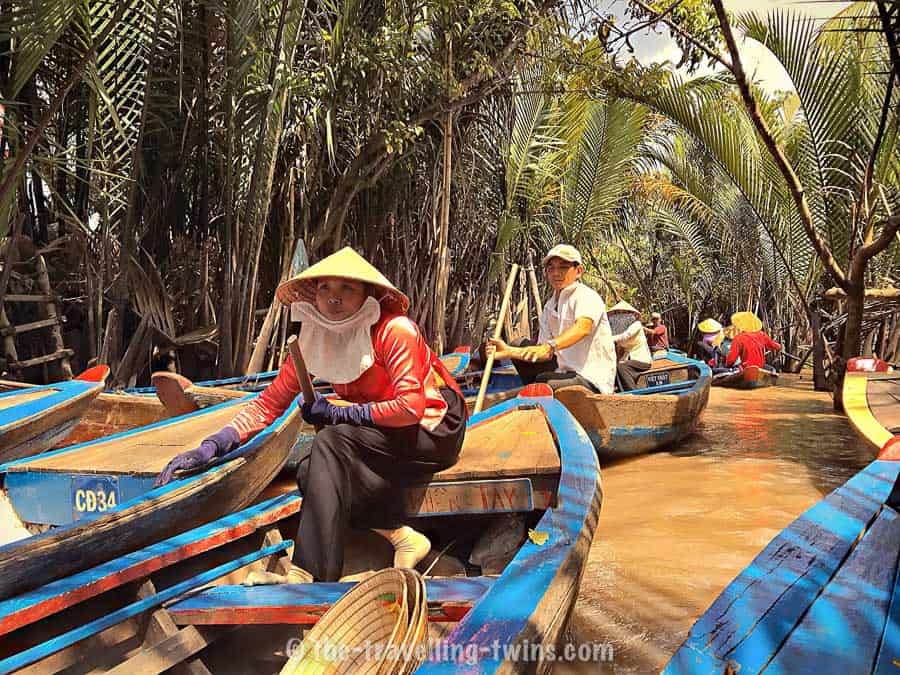
Vietnam is one of our favourite destinations in SouthEast Asia. Its a country with a rich and interesting history. We love exploring it and learning interesting facts about Vietnam and Vietnamese life.
| VIETNAM QUICK FACTS | |
|---|---|
| official name | Socialist Republic of Vietnam |
| size | 331,212 km2 |
| population | 96 million |
| official language | Vietnamese |
| capitol | Hanoi |
| religion | 74% Vietnamese Folk, 15% Buddhism 8% Christianity |
| flag | Red with Yellow Star |
| anthem | Độc lập – Tự do – Hạnh phúc “Independence – Liberty – Happiness” |
| famous sites | Hanoi, Hoi An, Sa Pa, |
Interesting facts about Vietnam’s history
The official name of Vietnam is the Socialist Republic of Vietnam. The country’s name was originally spelt as two words, Viet Nam.
The Vietnamese flag has a yellow five-pointed star on a red background. The five points represent farmers, workers, intellectuals, youth, and soldiers. The red background represents the blood shed during wars.

Location – Vietnam runs down the eastern coast of the South-East Asian peninsula. At its northern border is China, which it meets more or less on the tropic of Cancer, its western borders are with Laos in the North and Cambodia in the south. It faces the Philippines across the South China Sea.
Shape – running down the coast, Vietnam is very long and narrow. From north to south it covers more than 16 degrees of latitude, 1,600km (1,000 miles) measured as the crow flies, (this crow flies over Vietnam’s western neighbours) However at its narrowest, roughly midway from north to south the country is only about 50km (30 miles) wide from Hue on the coast to the border with Laos.

The Vietnamese culture includes a complex of Chinese, Japanese, and French and colonial influences with a modern American impact since Washington supported the French against Chinese communism since the second world and the South was occupied by the United States military in the 1960/70s.
The Capital of Vietnam is Hanoi in the north, but the largest city is Ho Chi Minh City (formerly Saigon) in the South. Hué, which became the capital for about 150 years from the beginning of the nineteenth century, is roughly half-way between them.
Nguyen (pronounced “win”) is the most common name in the country. Ho Chi Minh’s real name was Nguyen and it is also the name of the current president.
Facts about Vietnamese Culture
Important symbols in Vietnam culture are dragons, turtles, lotuses and the bamboo.
- Vietnamese dragon is symbolic creatures and according to traditional beliefs, Vietnamese people are descended from a dragon and a fairy.
- Turtles represent power and longevity. Lotus symbolizes purity in mind and heart.
- The Bamboo is a significant symbol in both Vietnamese culture and daily life. The solid, straight and high bamboo stems represent the resilience, indomitability and bravery of the Vietnamese people.
- Three main religions prevalent in Vietnam are Buddhism, Confucianism and Taoism.
- The most important festival in Vietnam is Tet, meaning ‘festival of the first day’. It is the lunar New Year. Hoi An has once a month on the eve of each full moon a Full Moon Festival.

- A tight-fitting silk tunic called ‘Ao Dai’ is the Vietnamese traditional national dress for women and one of the popular Vietnamese souvenirs for tourists to take home.
- The Vietnamese currency is called the Dong, there are about 23,000 Dong to the USD and about 30,000 to the Pound Sterling.
Interesting Facts about Vietnamese food
- The cuisine of Vietnam is the healthiest in the world. Vietnamese people are the slimmest people as a nation we have seen in the whole of Asia. If you order food in Vietnam it will probably come with an entire plate of green salad.
- Vietnamese cuisine traditionally combines the five fundamental elements of taste. These are spicy (metal), sour (wood), bitter (fire), salty (water) and sweet (earth)
- The most popular food in Vietnam is boiled rice; The second is Pho – chicken or beef clear soup with rice noodles. Pho is extremely tasty and you can buy it on almost every street in Hanoi, with or without spring rolls which are the third.

- Vietnam is the world’s largest producer and largest exporter of black pepper, producing more than twice as much as its nearest rival (Indonesia) and almost four times as much as either India or Brazil. We visited a pepper farm on the island of Phu Quoc.
- Vietnam is the second-largest coffee producer in the world – providing 20% of the planet’s coffee. Everyone drinks coffee here. Typically Vietnamese coffee is served with sweet condensed milk and lots of sugar. The Vietnamese drink raw egg coffee, which is very yummy too!
- Vietnam is also the World’s Second largest exporter of cashew nuts.
- Vietnamese also eat dogs. Our hearts stopped for a moment the first time we saw a grilled dog on a street stall in Hanoi. Read about other weird food in the world like the Vietnamese snake wine which is drunken for vitality.

Facts about Vietnam World Heritage
Vietnam has eight Unesco Heritage sites, listed here from North to South
- Central Sector of the Imperial Citadel of Thang Long Cultural Site in Hanoi
- Ha Long Bay – Natural Site on the coast, east of Hanoi
- Trang An Landscape Complex – Mixed cultural and natural site roughly 90 km south of Hanoi
- Citadel of the Ho Dynasty – Cultural Site roughly 100km south of Hanoi / 40 km south west of Trang An, and spread over three physical locations.
- Phong Nha-Ke Bang National Park – Natural Site about 100km north west of Hué
- Complex of Hué Monuments – Cultural Site in the former capital, Hué
- Hoi An Ancient Port – Cultural site on the coast about 100km of Hué
- My Son Sanctuary – Cultural Site about 25km from Hoi An

Facts about Vietnamese Nature
Vietnam is the home to the biggest cave in the world – Son Doong Cave.
Vietnam has varius hot springs – the most popular are Kim Boi Hot Spring, Bang Hot Spring, Dam Rong Hot Spring, Binh Chau Hot Spring. In Sapa in the North of Vietnam you can find most beautiful in the world Rice terraces. Most of the terraces was build in

Rivers in Vietnam
Vietnam has several rivers, but the best-known are The Red River in the North, Perfume river in the middle of the country, and the Mekong in the South.
The Mekong River is the biggest river in Asia. It passes through six countries (China, Myanmar, Laos, Thailand, Cambodia and Vietnam) In Vietnam it is often called the Coffee River due to its brown colour – looking like Vietnamese coffee with milk. In the Mekong delta, the river dominates the scenery so much that the most significant market Can Tho is on the river.

The Perfume river took its name 100 years ago because flowers falling from riverbank orchards in autumn carried a strong scent. The Red River carries significant amounts of silt which gives it a red colour. The sediment deposited on the Red River delta makes the surrounding areas very fertile.
The water buffalo is the national animal of Vietnam. Buffalos are still very important in Vietnamese agriculture, especially when cultivating rice. Buffalo for Vietnamese represents happiness, bravery and prosperity.

Vietnamese eat dogs. They don’t keep dogs as pets, but they do often keep potbelly pigs as pets, even inside the home.. I don’t know if they eat them too or not. Unfortunately, lots of animals are endangered in Vietnam due to hunting. Chinese buyers are willing to pay high prices for the meat of Pangolin, placebo medicine from bones or new bag from crocodile skin.
Vietnam, exactly Vietnamese Island Phu Quoc has its own dog breed – Phu Quoc Ridgeback dogs. These dogs have a ridge of hair along the spine which grows opposite to the rest of the fur.
Climate in Vietnam
In the south of Vietnam, there are two seasons – cold from November to April, and hot from May to October. In Northern Vietnam, there are four seasons.
What’s the best time to visit Vietnam? When you travel to Vietnam you should consider which part of the Vietnam you want to visit as the weather may vary a lot. While in the south it is boiling hot – especially in Saigon and Phu Quoc. Northern Vietnam can be quite cold and very wet.
Facts about street life and culture in Vietnam
Motorbikes and mopeds are the most common form of transport in Vietnam. Almost 35% of the population (including children and elderly) owns a motorbike. The volume of motorcycle traffic in Ho Chi Minh City means they drive everywhere, including on the pavements. The red traffic light seems to be optional – especially in Ho Chi Minh City.
Vietnamese are very healthy: beside eating healthily they do lots of sports, every morning in the park you will see people doing tai chi, dancing and in the afternoon playing jianzi. Jianzi is a game where you kick a shuttlecock with your feet.
Street vendors in Vietnam believe that the first customer of the day can predict good or bad trade for that day. If you are the first customer you can count on an extra discount for encouragement. Haggling for a better price is expected standard practice in most places.
At less than 2.5%, the unemployment rate in Vietnam together with its neighbouring Laos, Cambodia and Thailand are among the dozen lowest rates in the World and significantly lower than those of almost all other developing countries. Vietnam has a youth (15-24) literacy level better than 97% and an adult level of 93% with no significant gender disparity under age 24.
Is Vietnam still divided today between North Vietnam and South Vietnam as during the American War? Nope it is not, though still people will refer to Southern Vietnam and Northern Vietnam though the division would be referring only to geographical location. BTW what everywhere around the world we call Vietnam War in Vietnam is called an American War.
Interesting Facts about Vietnam – Pin it for later




Privacy Policy Disclaimer
This website uses affiliate links for income and support.
If you like our website, please consider using these links. You will be directed to the vendor, and we will get a small commission on your purchase price at no increased cost to you.
We have researched facts stated here as far as practicable but please check anything critical before committing your time and money. We do not claim any special knowledge or expertise, and we are not consultants for our readers.